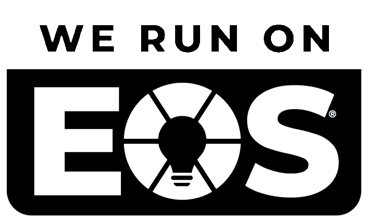Introduction
Digital transformation has its pros and cons, with the major con being increased vulnerability to cyber-attacks. Many businesses fail to realize that cybersecurity is something that affects your entire supply chain, as well as the people and processes that make up their whole operation.
The supply chain, a global marketplace worth $15.85 billion is the blood that keeps the manufacturing and retail industries running. Almost 57% of companies are said to believe that supply chain management increases their competitive edge, while 70% believe that it increases their productivity.
A supply chain disruption can bring these industries to a standstill and break the commercial world down. This is why it is important to handle supply chain risk management to minimize supply chain disruption and supply chain risks. Trish Regan, an American TV presenter summed it perfectly saying, “Anytime there’s a disruption in the supply chain, any time people cut back on spending, there will be a recession.”
Proper supply chain risk management helps business, both small and large, utilize the tried and tested strategic steps that mitigate supply chain risks and result in business continuity.
Adopting that mindset and taking these measures can help your technology company manage supply chain risks and stay ahead of the curve. As Hendrith Vanlon Smith Jr, CEO of Mayflower-Plymouth puts it, “Global supply chains have many constituents and responsible parties. Everyone in the supply chain has a responsibility to act in a way that promotes effeciency in the supply chain.”
1 – Enforce Supply Chain Security
Your employees cannot simply address supply chain risks as they come, or else chaos will ensue. Apply daily security policies so that employees know how to both mitigate and respond to risks.
This can look like a security checklist, daily measurements of performance, and defining responsibilities for holding all parties accountable. Point North Networks offers employee cybersecurity training to create and develop better supply chain resilience.
2 – Adopt International Standards of Supply Chain
For those who exchange and store vast amounts of data like medical records, financial data, and more, regulated access is a must. International IT standards like GDPR and HIPAA ensure organizations manage this data securely and document it.
When selecting a SaaS vendor, find out if they are SOC 2 or ISO27001 compliant to meet security standards.
3 – Have a Layered Security System
Managing multiple third-party vendors makes it a little harder to predict threats. Layered security protects each level of your infrastructure with a unique solution. That means if one fails, others can step in to help.
“If the global supply chains are too fragmented, they’re more vulnerable to shock. And that presents a threat to businesses everywhere,” says Hendrith Vanlon Smith Jr, CEO of Mayflower-Plymouth. Having a layered security system will require your employees to be trained and tested regularly to identify the threats at each level.
4 – Implement PPRR Risk Management
This is a popular supply chain risk management technique used globally to ensure that minimum supply chain risks are faced by businesses. It includes prevention, preparedness, response and recovery for managing supply chain risk.
It is all about taking the right precautionary measures, having a contingency plan, executing it properly and resuming operations and bringing things back to normalcy as soon as possible.
5 – Managing Environmental Risks
Managing environmental risks or natural disasters came to the fore after the global supply chain was majorly disrupted during the COVID-19 pandemic. Before the pandemic, a large number of retailers depended on China for supplies. Once the pandemic hit, the entire global market and the global supply chains saw a dwindling of potential risks that the pandemic brought.
With limited workforce and supplies, several retailers were forced to relook at their strategy of depending on a single supplier. A multiple suppliers system evolved during this time that gave the retailers multiple options for getting their supplies and enhancing their delivery processes and supply chain management.
Retailers across the globe follow newly developed strategies to ensure that their supply chain risk exposure is involved in supply chain risk management. Multisource, nearshore, implementing stress tests, building inventory buffers and increased capacity, and investing in product and plant harmonization have emerged as the go-to risk management steps for retailers to handle such situations.
Today, risk management is an important part of global supply chains. It helps companies maintain supply chain efficiency and develop a risk aware culture to be prepared for all sorts of potential risks.
6 – Having a Robust Cyber Supply Chain Risk Management
Today, the Internet of Things and other similar technologies have become an integral part of maximizing supply chain operations. However, it also brings along the element of online threats, exposure to ransomware, malware, phishing and even hacking.
Such threats can, however, be minimized by implementing a robust cybersecurity system. You must have a compliance system for all third party vendors. Establish a controlled access system where only authorized or limited number of users can access the system.
Vendor risk assessment, implementing data stewardship, and installing software that reflects all user activities in your systems can also provide a strong protective covering from threats, further cementing your risk management.
You must provide comprehensive training to all employees about all kinds of cybersecurity protocols and work with vendors from your network for a unified disaster recovery plan. Establishing backup controls and regularly updating safety walls and antivirus systems are also good options for minimizing risk factors and supply chain disruptions.
7 – Enhance Your Supply Chain Visibility
Research show that only 6% report complete visibility on their supply chain. Knowing everything about your supply chain partners can help mitigate risks and help you take better decisions and enhance risk management. Factors like the financial stability of the suppliers will help you choose the best ones.
There are several credit rating agencies that predict the financial report of a supplier from a list of suppliers, helping you reduce the risk of choosing the wrong partner. This can reduce your vulnerability and supply chain risk.
Investing in technology that will provide higher product and shipment visibility will help you give your customers more accurate delivery time or develop a contingency plan in case of delays. Such technological support comes in handy in risk management in last-mile situations where third parties take charge and risk factors like losing sight of your shipment can arise.
8 – Track the Carrier Metrics
Irrespective of where you are in the supply chain, you must keep a track of where your freight carrier is and when the delivery will be made. Any delay in the delivery processes, even if it means a delay of a single item delivered late can disrupt the supply chain, increasing the supply chain risk.
So, you must keep a tab on your freight carrier by evaluating its efficiency if you are embarking on a new collaboration. However, regular evaluation of the ones that you have been already working with is also a good idea. Following are the metrics you must track:
Keep a tab on the transit time, that is the total amount of time it takes for a freight carrier to reach its destination. Taking the number of stops a carrier takes on the way is also something to be accounted for. The higher the stops, the longer will be the transit time. Even if it stops only once, if it’s a long halt, it can delay the assignment.
The average loading time is another aspect that you must account for. This includes the amount of time for loading the carrier and completing the paperwork. Also, ensure that the carrier is maintained regularly so that there are no unwarranted breakdowns.
Route optimization is another important factor. A well-optimized route will save time and fuel, two very important factors in supply chain risk management.
9 – Have a Contingency Plan for Supply Chain Risk Management
Business continuity is imperative for any company and having a contingency plan is an important step in supply chain risk management. Risk assessment, accounting for known and unknown risks and risk mitigation, etc. are important factors to look at.
Additionally, map your supply chain to know the key component that might be vulnerable. Take account of your primary supplier and your secondary suppliers and develop mitigation strategies around them. A good way of doing this is by diversifying your suppliers.
Regularly audit your suppliers and what contingency plans they have. Establish a crisis management team to come into action during emergencies. Keep all communication channels seamlessly integrated. Document all processes and develop a single source of information.
Stay updated with the global scenario and keep your contingency plan open so that it can be redeveloped according to the changing global scenario. Have alternate contingency plans.
10 – Train Your Staff – Risk Awareness Training
One sure way of having a competitive advantage over others is to keep your staff well trained. Providing risk awareness training will keep them agile and aware of what kind of risks can impact the supply chain and what actions are required to mitigate risks.
Your training module must include risks and challenges involved in supply chain management, best practices of supply chain risk management, and improving cybersecurity awareness by providing computer and internet training. Risk assessment software training should also be included in the module. Case studies show that supply chain attacks have increased by 78% since 2017 and almost 58% of such attacks happen on small businesses.
11 – Risk Monitoring
Supply chain risk will present itself at one point or the other. It is one thing that you are prepared for risk mitigation and it is a completely different thing to monitor risks and adopt a proactive approach. There are internal supply chain risks and external supply chain risks, and monitoring risks can create a risk aware culture and keep the entire company better prepared to manage things.
Most companies assume that their process is risk free, but that is never the case. Things can change for the worse at any time. That is why regular monitoring is important.
To Conclude
The best way of doing it so implement a digital retail solution that can be scaled as your business grows. Such a system will automate the monitoring of different aspects of the supply chain. This will help streamline your business operations while providing you with peace of mind.
Need solid supply chain risk management support? Contact Point North Networks today to work with a partner who will identify all the ways you can mitigate supply chain risks to your business.


